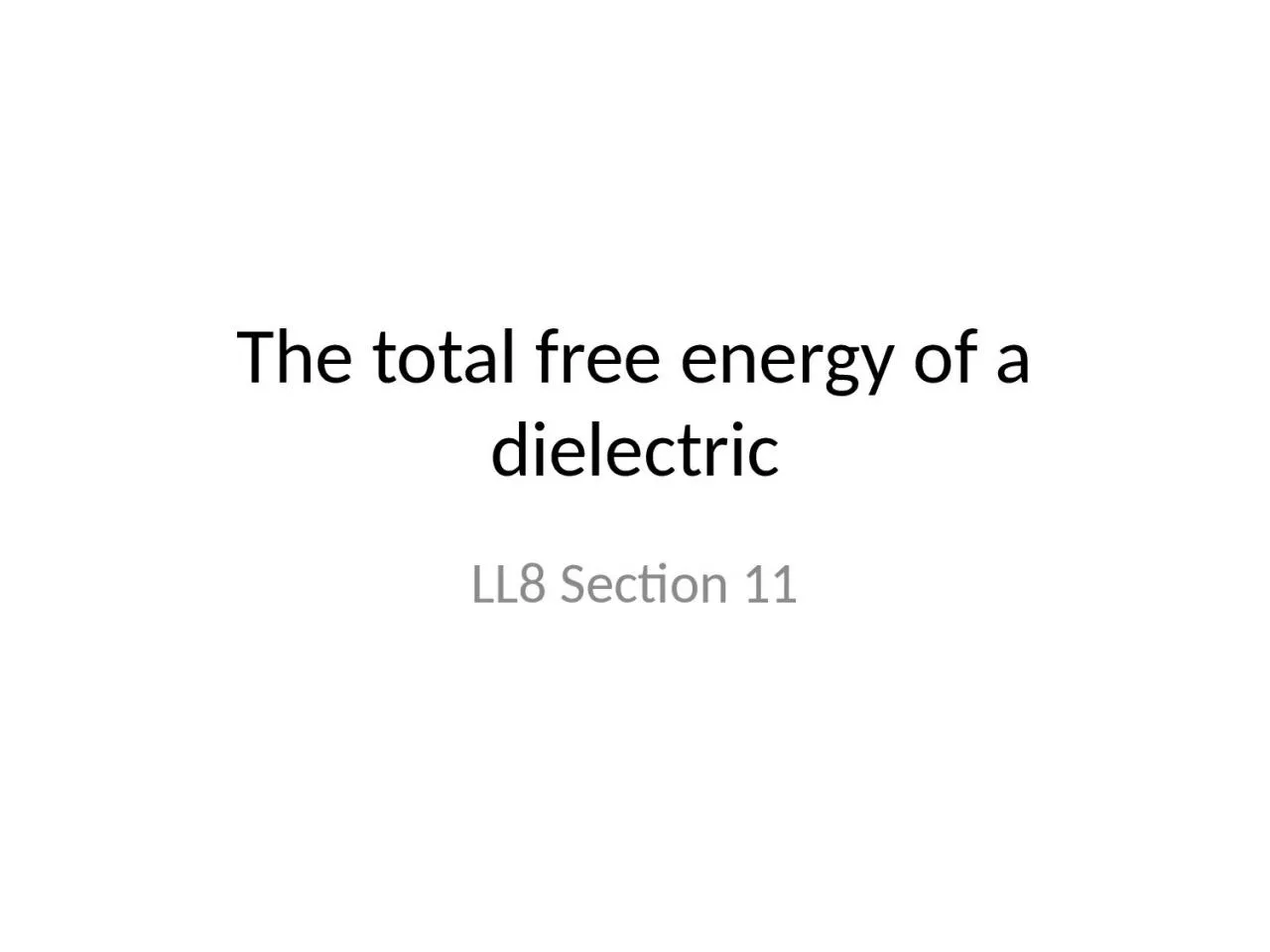

LL8 Section 11 Dielectric need not extend to infinity Electric field includes contributions from both extraneous charge on the conductor and polarization charge in the dlelectric 1 Part of the electrostatic free energy of the dielectric that we found in section 10 has nothing to do with ID: 1031164
Download Presentation The PPT/PDF document "The total free energy of a dielectric" is the property of its rightful owner. Permission is granted to download and print the materials on this web site for personal, non-commercial use only, and to display it on your personal computer provided you do not modify the materials and that you retain all copyright notices contained in the materials. By downloading content from our website, you accept the terms of this agreement.
1. The total free energy of a dielectricLL8 Section 11
2.
3. Dielectric (need not extend to infinity)Electric field includes contributions from both extraneous charge on the conductor and polarization charge in the dlelectric 1. Part of the electrostatic free energy of the dielectric that we found in section 10 has nothing to do with the thermodynamics of the dielectric.The first step is to remove the irrelevant part.
4. Field that would be present if dielectric were gone.Old definition of free energy: New definition:Difference has nothing to do with dielectric, so the new definition gives the same thermodynamics.
5. 2. Infinitesimal change in free energy of the dielectric caused by an infinitesimal change in the field while maintaining thermal equilibrium at constant temperature.3. The change in due to a change in the field, caused by a reversible change in the charges at constant temperature.This is an infinitesimal change. It could be hard to integrate to find the total free energy if polarization does not depend linearly on field.
6. Oppositely charged conductorsTotal electric dipole momentIf we allow temperature to change, thenTotal dipole moment= negative change in free energy at constant temperature divided by the change in the external field5. Next, we consider the infinitesimal change in the free energy of a dielectric if the externally applied field is spatially uniform.
7. For a linear isotropic dielectric, D = e E, we found in section 10 the total free energy density FSubtract cross termsUsing new definition of free energy of dielectric7. We again allow the externally applied field to be non-uniform, but we now assume the dielectric is linear and isotropic. In that case the total free energy of the body due to the field can be calculated, not just
8. Charge on conductorFirst integralNo extraneous charge in the dielectricNo charge in vacuumPotentials are constant on surface of conductorSince
9. Second integralTotal dipole moment of dielectricIf the external field is uniformThis is the total free energy of the body due to an arbitrary externally applied field if the body is a linear isotropic dielectric
10. 8. Different derivation for uniform field, for arbitrary dielectric and field:Next we assume a linear isotropic dielectric. Then P must be a linear function of + const++Same result for isotropic linear dielectric in uniform external field as on slide 9 (Infinitesimal change. Might be hard to integrate to find )Now assume external field is uniform
11. 9. Next we consider a linear dielectric which is anisotropic.For linear dielectric, we can more generally write the components of the total dipole moment induced by a uniform externally applied electric field as Same as for conductors, where polarizability depends only on shape. But for dielectric a also depends on eOrder of derivatives doesn’t matter: For uniform externally applied field
12. 10. Finally we consider the free energy of a dilute gas in an arbitrary externally applied electric field, and then for a uniform one.This problem is a preview for the free energy of para- and dia- magnetic media. For a weak or dilute dielectric e ~ 1, e.g. a gas.Susceptibility is small.Then the applied field is not changed much by the dielectricAssumed uniform